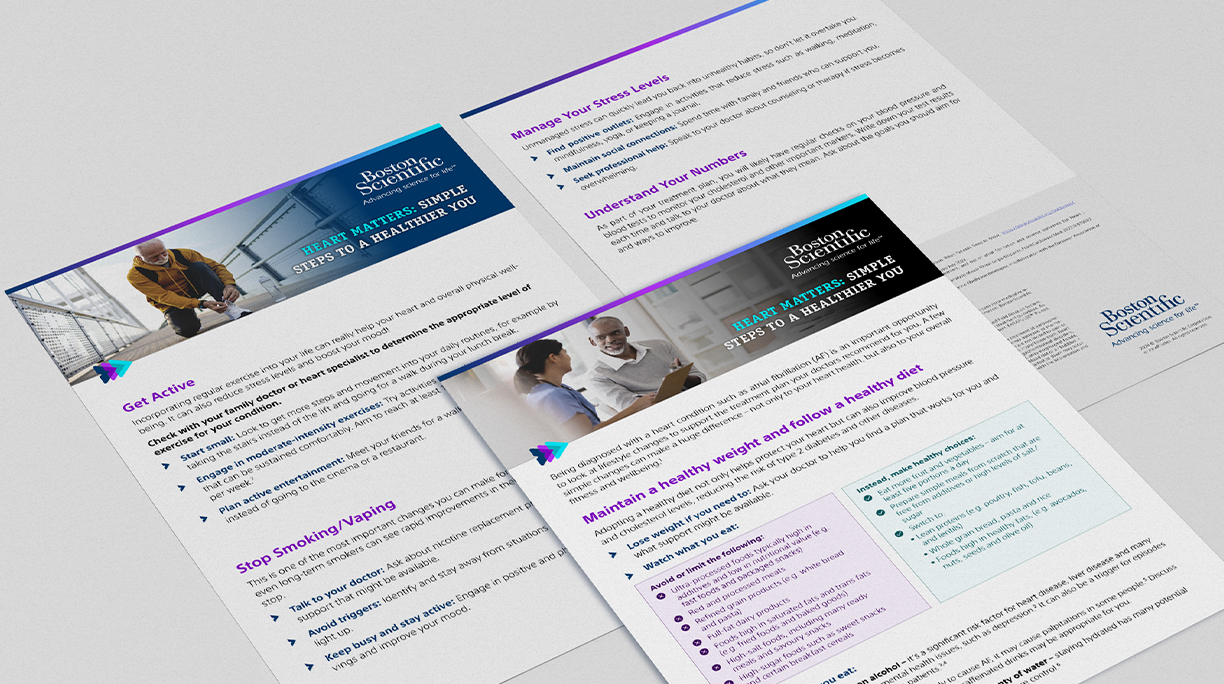Living with atrial fibrillation can be challenging, but many people successfully manage atrial fibrillation (AFib or AF) and maintain a full and active life, whether through lifestyle adjustments, medications, or procedures like cardiac ablation. While these treatments can help control abnormal heart rhythms, it’s important to continue monitoring your heart and make heart-healthy choices
Monitoring AFib
After your initial treatment, your doctor may want to monitor your heart rhythm. There are many devices that can be used to detect AFib and be sure everything is working fine. Talk to your doctor when you have questions or worsening symptoms and make sure to schedule regular check-ins.
- Implantable cardiac monitor is an implantable device, placed just under the skin in the chest area that records the heartbeat continuously. It's also called a Implantable cardiac monitor or loop recorder. This device can be used to detect and monitor atrial fibrillation (AFib or AF) , allowing for long-term monitoring of heart rhythm and identifying episodes of AFib that might otherwise go unnoticed.
- Wearable tech : Wearable tech including some smartwatches can be recommended by your doctor. These devices can detect AFib through your pulse and can provide a snapshot of your pulse or heartbeat.
- Traditional medical monitor (holter or event monitor) records the heart's activity while you do normal, day-to-day activities. A holter monitor will be kept with you for 24 to 48 hours, whereas an event monitor records your heart’s activity only at certain times, usually for a 30-day period.

